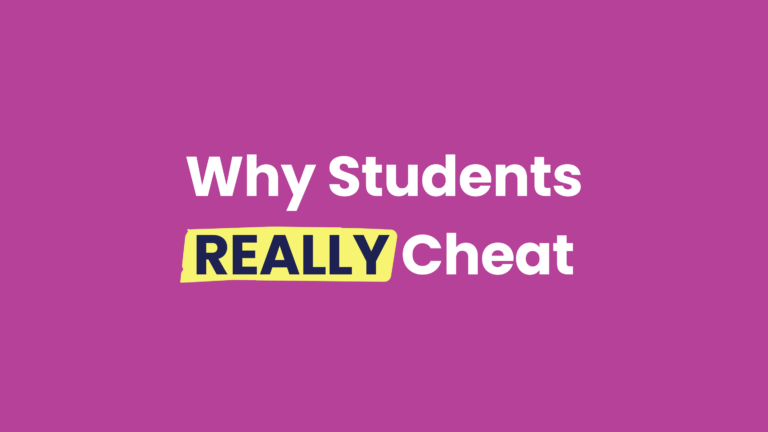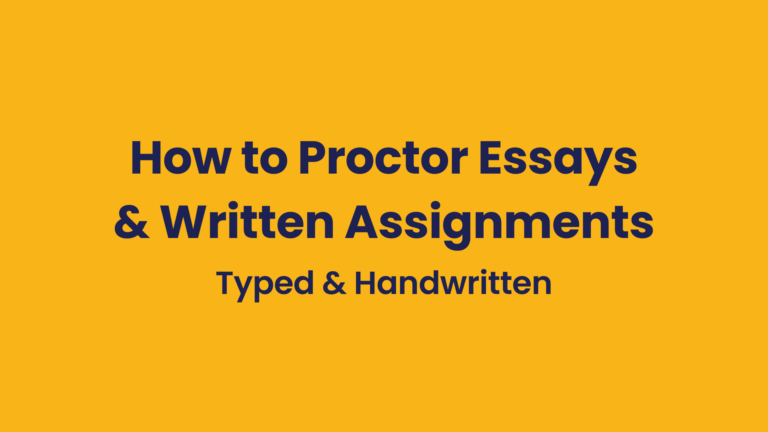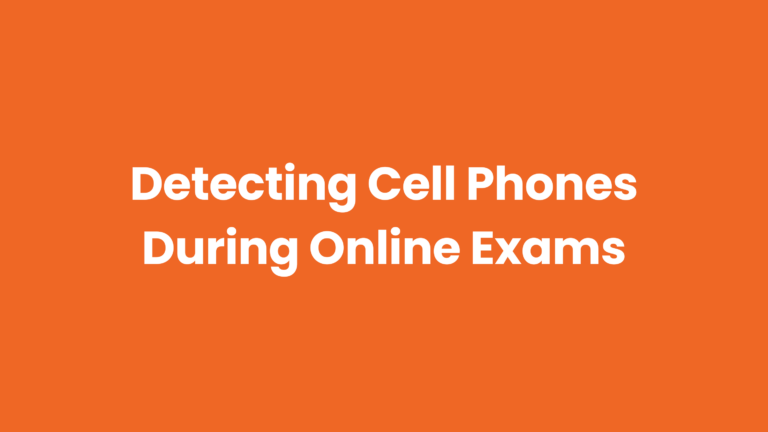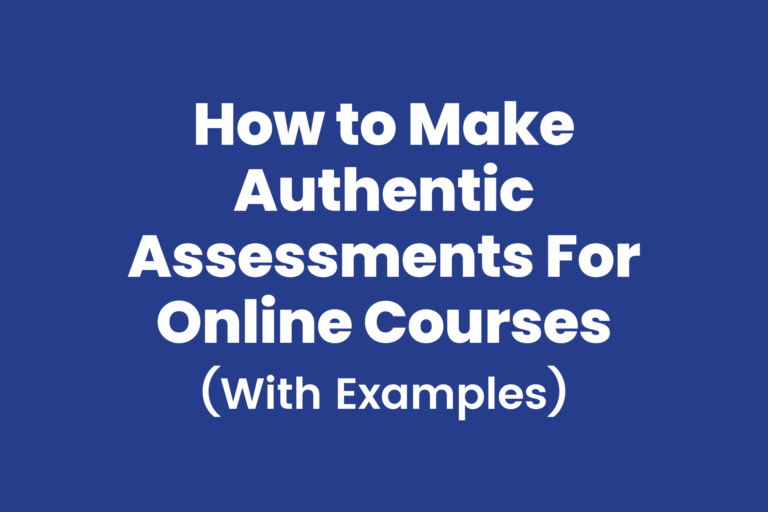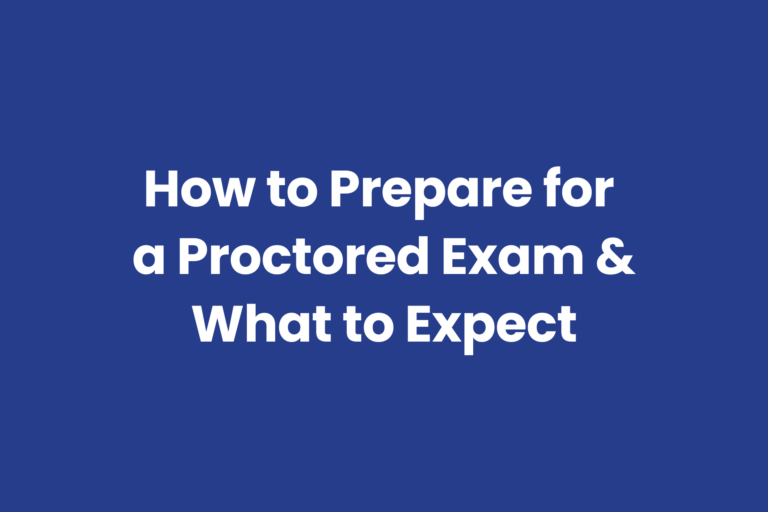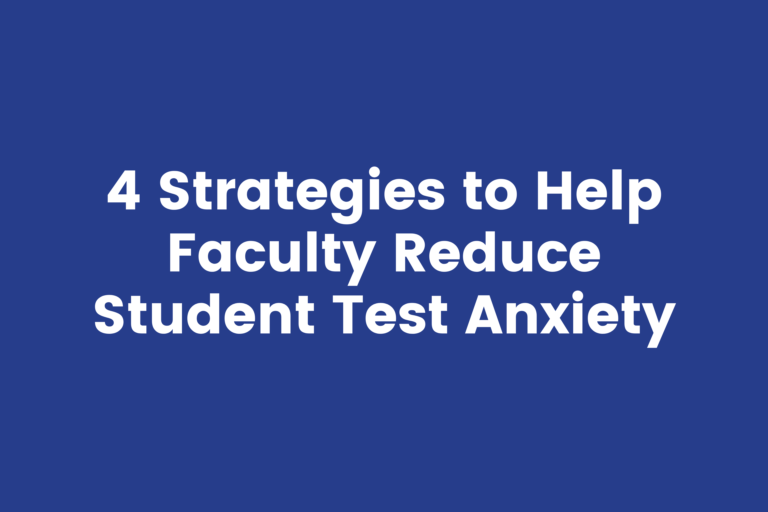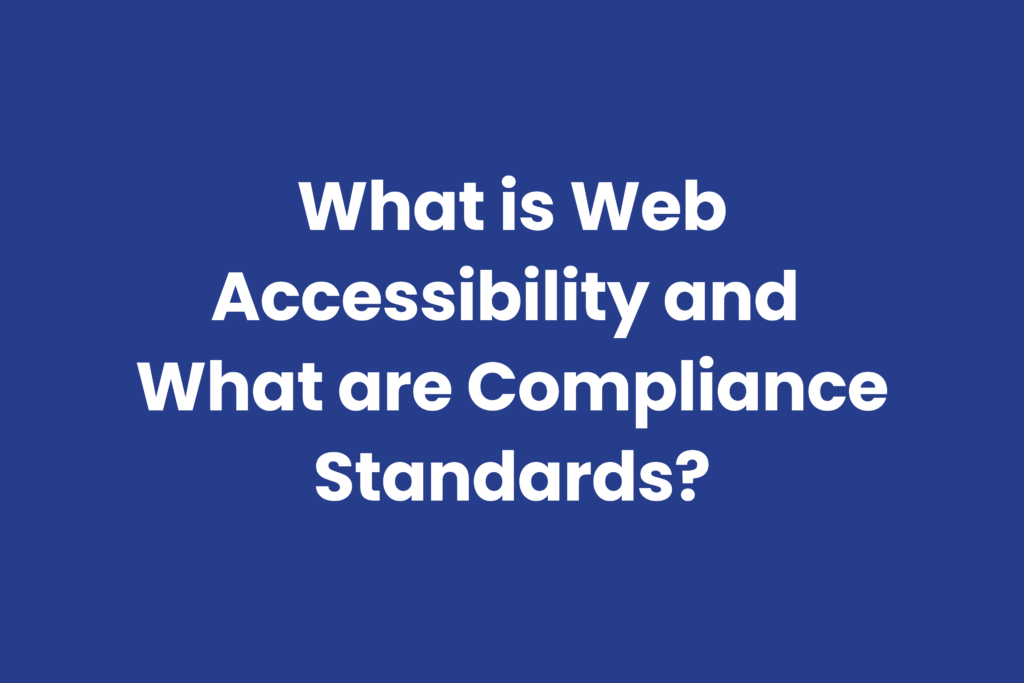Cheating happens.
It happens at all levels of education. From the anxiety-inducing timed multiplication test in 3rd grade to high-stakes final exams in college.
It happens more often during online exams. A survey1 found that students are about 50% more likely to cheat in online courses than in live classes.
It happens for many reasons. Sometimes students cheat because they want good grades or just because there’s little risk of getting caught. But it also ties back to factors like their perceptions of faculty and confusion about what counts as cheating and what’s just unethical behavior.
It happens in different ways. Whether it’s sneaking a quick Google search on their cell phones, whispering questions to Siri and Alexa, or having entire essays written by AI chatbots, technology makes cheating quick and easy.
From anxiety-inducing timed multiplication tests in 3rd grade to high-stakes final exams in college.
A survey1 found that students are about 50% more likely to cheat in online courses than in live classes.
Sometimes students cheat because they want good grades or just because there’s little risk of getting caught. But it also ties back to factors like their perceptions of faculty and confusion about what counts as cheating and what’s just unethical behavior.
Whether it’s sneaking a quick Google search on their cell phones, whispering questions to Siri and Alexa, or having entire essays written by AI chatbots, technology makes cheating quick and easy.
Click below to skip ahead
Find what you need
Talking to students about cheating is difficult but necessary
No instructor looks forward to talking to a student about cheating (we really hope not). And while these are the last conversations you want to have with your students (and they feel the same), they’re necessary—no matter who, what, when, where, why, or how cheating happens.
But to make these conversations effective, you need to approach them thoughtfully. Talking to a student about cheating requires careful planning, consistency, emotional intelligence, solid evidence from the online proctoring software, and a deep understanding of disabilities and accommodations, which are often overlooked.
The ripple effect of addressing academic dishonesty
Responding to cheating the right way helps build a culture of academic integrity among your students.
“Instructors at our partner institutions have told us that addressing suspected cheating has an impact beyond each individual case,” said Jordan Adair, VP of Product at Honorlock. “Providing consistent feedback to students on their proctored exam results helps reduce future incidents and sends a clear message to students and their peers that academic integrity is valued at their institution.”
So, what's next?
- How do you start the conversation?
- What should you say, and what should you avoid saying?
- What evidence do you need to prove they cheated during the proctored exam?
- What if their story is believable, but you still have concerns about academic dishonesty?
- Have you considered how disabilities may play a role?
- Are your test rules as objective as they should be?
- How do you start the conversation?
- What should you say, and what should you avoid saying?
- What evidence do you need to prove they cheated during the proctored exam?
- What if their story is believable, but you still have concerns about academic dishonesty?
- Have you considered how disabilities may play a role?
- Are your test rules as objective as they should be?
This article provides strategies for preparing for a conversation with a student about cheating, practical approaches for discussing it effectively, and templates for what to say in different situations.
Preparing to talk to a student about cheating
Review the institution’s academic integrity policy
Determine the purpose of the conversation
What do you want out of this conversation? Be more specific than just “to discuss cheating.” Establishing a clear goal helps guide the conversation and your preparation for it.
Do you want to…
- Inform the student that the exam proctoring software flagged certain behaviors and discuss how to avoid them next time?
- Determine if the student needs additional support and resources?
- Hear their side of the story before deciding how to proceed?
- Discuss the next steps in the academic misconduct investigation process and potential consequences?
Notify the student via email
Instructor note: If multiple students are involved in the same instance of misconduct, email each student individually and do not mention the other students’ names. This protects student privacy and addresses each situation individually.
Templated email to request a meeting with the student
Subject line: Meeting Request: Important Discussion Regarding [Course Name]
Dear [Student First & Last Name],
I am writing to inform you of my concerns regarding your recent submission for the [exam/assignment name] in [course name] this semester (Semester 20__).
During the [exam/assignment], the proctoring software flagged behavior that appeared inconsistent with the provided rules and academic integrity policies at [Institution Name].
To ensure a fair process, I would like to meet with you to discuss the software’s findings, hear your perspective, and clarify any questions before taking further steps.
I am available [virtually or in my office] on [list dates and times]. Please reply with a date and time by [date and time].
I’ve included [links/attachments] to [Institution Name]’s Academic Integrity Policy and the course syllabus:
- [Institution Name] Academic Integrity Policy [link and/or attach document]
- [Course Name & Number] Syllabus: [link and/or attach document]
Thank you for your cooperation.
Sincerely,
EMAIL TIPS
Example from email: “… the proctoring software flagged behavior that appeared inconsistent…”
Example from email: I would like to meet with you to discuss the software’s findings, hear your perspective, and clarify any questions before taking further steps.
Example from the email: I am available [virtually or in my office] on [list dates and times]. Please reply with a date and time by [date and time].
Example from the email: I’ve included [links/attachments] to [Institution Name]’s Academic Integrity Policy and the course syllabus:
- [Institution Name] Academic Integrity Policy [link and/or attach document]
- [Course Name & Number] Syllabus: [link and/or attach document]
Templated email for other conversation purposes
Use this to inform the class of commonly flagged behavior:
The proctoring software flagged several behaviors among quite a few students during the last exam. I wanted to share these issues with you all and offer some tips on how to avoid them in the future. Please take a look before your next exam. [Add a bulleted list after this of the behaviors with specific tips to avoid them]
Use this text at the beginning of the email if the purpose of the conversation is to determine if the student needs additional support and resources:
Review your test rules and instructions
Two example test rules that aren’t as objective as they seem:
1. Do not use any AI chatbots to write any portions of your essay.
This rule work because it includes “any” chatbots writing “any” portions of their essay, but students might think:
- I can’t use AI chatbots to write my essay, but I can use them to edit it.
- I can use Grammarly to rewrite and improve my essay because it’s an AI writing assistant, not an AI chatbot.
Do not use any artificial intelligence (AI), including chatbots, voice assistants, writing assistants, or editing software, to write, edit, or improve any part of your essay. All essay content must be your original work, created entirely by you, without assistance from any external electronic technologies.
2. Do not use a cell phone, tablet, or other computers during the proctored exam.
Seems pretty clear, right? Well, students might think:
- I can’t use my phone, tablet, or another computer, but it doesn’t say I can’t use my smartwatch.
With those examples in mind, play devil’s advocate as you review. This helps prepare for the conversation and refine your test rules. If updates are needed, inform students via email and LMS tools like messages, forum posts, and announcements.
Instructor Tip
You can use an unscored question at the beginning of the next test to confirm their acknowledgment of any updates to test rules and instructions.
Consider disabilities when reviewing evidence from the proctoring software
If the evidence (exam reports and video recordings from the remote proctoring software) shows suspicious behavior, it’s natural to assume it’s cheating. However, this “suspicious” behavior could be related to disabilities and accessibility needs.
For example, a student might be repetitively looking off-screen during the exam.
At face value, this behavior seems suspicious—like they might be looking at notes or receiving help from someone off-camera.
But what if the student has a condition, such as Tourette Syndrome (TS) or Attention Deficit Hyperactivity Disorder (ADHD), that causes involuntary head movements?
Another thing to consider is that many college students don’t disclose disabilities to their instructors2, often due to unawareness3 and stigma4:
- Unawareness: many students don’t know they need accommodations, aren’t aware accommodations are available, and/or don’t know how to find help at their institution.
- Stigma: fear of judgment and being treated differently by peers and instructors prevents students from disclosing disabilities; some are even ashamed to seek accommodations.
If the evidence (exam reports and video recordings) from the proctoring software shows suspicious behavior, it’s natural to assume it’s cheating. However, this “suspicious” behavior could be related to disabilities and accessibility needs.
“Understanding ADA guidelines and different accommodations that students need is invaluable in education and academic integrity,” said Dr. Lee Conerly, Director of Academic Instruction at Coastal Alabama Community College, “Students’ behaviors during exams may look like cheating, even when they absolutely are not cheating.”
Dr. Conerly gave an example of how the behaviors of students with Attention Deficit Hyperactivity Disorder (ADHD), like repetitive head twitching and fidgeting, can be mistaken for cheating, “I watched the exam recording, and the student was repeatedly looking off to the right, which makes it easy to assume they were looking at something or someone for answers. But I recognized signs of ADHD in their behavior. So, instead of jumping to conclusions, our conversations with the student focused on the human elements to learn more about them and their accommodation needs.”
However, the student didn’t disclose this information to the instructor before this conversation, which is common among college students2, mainly due to unawareness3 or stigma4.
- Unawareness: many students don’t know they need accommodations, aren’t aware accommodations are available, and/or don’t know how to find help at their institution.
- Stigma: fear of judgment and being treated differently by peers and instructors prevents students from disclosing disabilities; some are even ashamed to seek accommodations.
Tips for instructors to increase awareness and reduce stigma related to accommodations:
1. Talk about accommodations often
Engage in open conversations with students to increase awareness and understanding of disabilities and accommodations. Discuss accommodations before each assessment and encourage the use of campus support services. Share anonymous examples (to protect students’ privacy) of students who have successfully used accommodations in your courses.
Be very clear: accommodations are support, not special treatment.
2. Make it easy to find support
Provide links to campus support services in various areas of your online course, such as Announcements, Discussions, Chat, and syllabus.
3. Use anonymous surveys
Ask students to complete an anonymous survey in your LMS or through a tool like SurveyMonkey. This helps identify common challenges without revealing specific student needs.
For example, if several students report mobility disabilities that impair typing, you could allow talk-to-text dictation options for tests and other assignments.
How to talk to a student about cheating
There’s no way around it: talking to a student about suspected cheating is inherently awkward, challenging, and even emotionally draining for both of you.
While we provide practical strategies and scripts for various situations, it’s important to recognize that each case is unique and rarely straightforward. However, being direct and sticking to the facts—firm and factual—keeps emotions in check and the discussion focused.
Focus on the objective information
Prevent opinions and biases from getting in the way by focusing on objective information:
- The evidence you’ve gathered from the online proctoring software
- Your course policy and the exam/assignment rules
- The institution’s academic dishonesty policy
Explain the flow of the conversation
Thank the student for meeting with you, then tell them that you’ll discuss your concerns, present evidence from the online proctoring solution, and review academic integrity policies for your course and/or institution.
You also need to tell them they’ll have an opportunity to share their side of the story and ask questions. After that, the conversation can be similar to the email you sent them.
Discuss your concerns
Tell the student exactly what your concerns are. Be specific and concise.
Example: “During the [exam name], the test proctoring software flagged you for [specific behavior, such as using a cell phone off-screen], which is against academic integrity policies.”
Present the evidence
Before presenting any evidence from the exam proctoring solution, confirm that the student knows which solution you’re referring to (they may use multiple during their education) and understands how it works. If they don’t, offer to provide an overview and answer any specific questions they have.
Then, you can transition to presenting the evidence:
“I watched a recording of the behavior, which the remote proctoring software flagged and was reviewed by one of their trained proctors. We can watch the recording together right now if you’d like.”
If they want to watch the recording:
“I have the video ready. Feel free to explain your actions as we watch. Let me know if there are times you’d like to pause or parts you’d like to rewatch.”
Instructor tips:
- Have the video cued and ready
- Write down the timestamps of important parts to watch
- e.g., The student’s cell phone is visible at :20, :33, :45
- Ask open-ended questions instead of leading questions
- For example, instead of asking a leading question like, “Were you looking at your cell phone here?” ask, “Can you describe what you were doing here?”
If they don’t want to watch the recording:
- Acknowledge their decision
“I understand you’d rather not watch the video of the proctored exam, and that’s perfectly okay. We can discuss the flagged behavior based on what I observed.”
- Be highly descriptive (and accurate) when describing the flagged behavior
Always be direct and concise, but give as much detail as possible when describing the flagged behavior, like in the examples below.“During the exam, the proctoring platform flagged several instances where you…”
- covered your mouth and asked Siri for answers, which can be heard in the video. I’ll read them from the transcript provided by the Voice Detection software within the proctoring platform, [read transcript].
- used a cell phone, which the AI detected was nearby, to search for answers to test questions.
Ask for their explanation
Whether they choose to watch the recording or not, ask open-ended questions to get their side of the story, such as:
- “Can you help me understand what was happening during when [specific behavior]?”
- “Can you describe what you were doing when [specific behavior]?
Responding to different explanations
Responding when the explanation resolves the situation
“Thank you for explaining what happened. Based on your explanation, it seems this situation can be resolved. I appreciate your honesty and cooperation. Let’s continue to follow the guidelines to avoid any future misunderstandings.”
Responding when you’d like to seek guidance from another expert
“Thank you for your explanation. Hearing your perspective helps me understand the situation better. To ensure fairness and handle the situation appropriately, I’m going to consult with [specific expert, department, etc.] to better understand [specific topic]. I’ll follow up with you once I have more information.”
Responding when students accept responsibility for cheating
The conversation can be difficult even when the student admits to cheating and accepts responsibility. Your response may depend on the institution’s academic integrity policy, which could require you to report it, or it may be left up to you.
“I appreciate your honesty in admitting to cheating. However, academic integrity is fundamental, and I’m required to follow the academic integrity policy, which means reporting this incident. The appropriate office will determine the consequences. I understand this isn’t ideal, but it’s necessary to maintain fairness for all students.”
Responding when students deny cheating
The best response when students deny cheating (even with clear evidence in the video recording) is to use neutral language, stick to the facts, and ask clarifying questions.
“I understand that you have a different perspective, but the video shows repeated instances where you [state the observed behaviors]. We can address each instance individually. Can you explain why you were [first observable action].”
If there’s little progress, explain the next steps:
“Given the evidence and your explanation, I need to follow the university’s academic integrity policy. This involves reporting the incident to the academic integrity office for further review. They’ll evaluate the evidence, and you’ll have an opportunity to share your perspective and ask questions.”
Address the integrity policy, next steps, and consequences
Unless their explanation resolves the situation, you should review your institution’s policies for addressing acts of academic dishonesty, the next steps in the investigation and/or process, and the potential consequences for violations.
Instructor note: continue using neutral language, regardless of what you learned in the conversation.
For example, instead of saying, “Since you cheated on the exam, you’ll be [insert consequence],” say, “Violations of this policy can lead to these consequences…”
Dealing with cheating is difficult but worth it
Talking to students about suspected cheating isn’t easy, but it’s key to maintaining academic integrity and protecting your reputation.
Take the time to prepare: review your course policies, the institution’s academic integrity policies, the evidence from the online proctoring platform, the objectivity of your own test rules, and consider disabilities.
Consider the student’s perspective: these conversations can be stressful for students, so remember to give them the opportunity to share their side of the story while actively listening.
Every word matters: from the first email you send to request a meeting to the conversation itself, stay objective, focus on the evidence, and have a real dialogue with your student to keep the process fair and constructive.
Proctor online exams effectively: use the right proctoring solution to deter and prevent cheating while keeping the test experience fair, customizing exam settings to accommodate students’ needs, and making it as stress-free as possible.
Blog Sign Up
Resources to prevent cheating and improve exams
Preventing cheating on online exams
Improving online exams & courses
Preparing students for online proctored exams
Accessibility
1 Newton, P.M., Essex, K. How Common is Cheating in Online Exams and did it Increase During the COVID-19 Pandemic? A Systematic Review. J Acad Ethics 22, 323–343 (2024). https://doi.org/10.1007/s10805-023-09485-5
2 Adam, T., & Warner-Griffin, C. (n.d.). Use of Supports among Students with Disabilities and Special Needs in College. Data Point. NCES 2022-071. https://eric.ed.gov/?id=ED618477
3 Driving Toward a Degree 2023: Awareness, Belonging, and Coordination – Tyton Partners. (2023, November 16). Tyton Partners. https://tytonpartners.com/driving-toward-a-degree-2023-awareness-belonging-and-coordination/
4 Herrick, S. J., Lu, W., & Bullock, D. (2020). Postsecondary Students With Disabilities: Predictors of Adaptation to College. Journal of College Student Retention, 24(2), 603–624. https://doi.org/10.1177/1521025120941011



